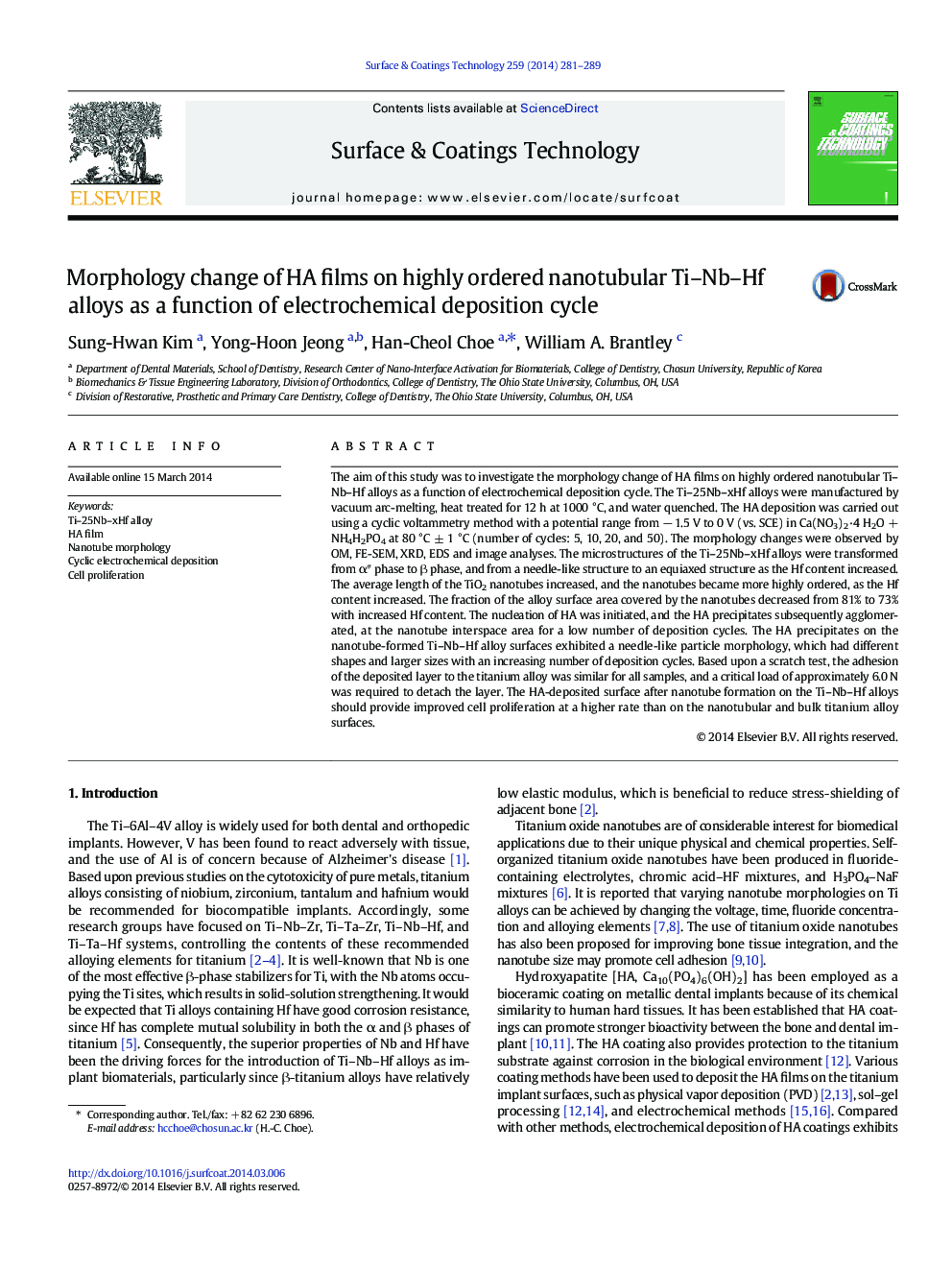| کد مقاله | کد نشریه | سال انتشار | مقاله انگلیسی | نسخه تمام متن |
|---|---|---|---|---|
| 1657366 | 1008282 | 2014 | 9 صفحه PDF | دانلود رایگان |

• Electrochemically deposited HA films on nanotubular Ti–Nb–Hf alloys were studied.
• The surface area occupied by nanotubes decreased with increasing Hf content.
• Nucleation and agglomeration of HA films occurred at nanotube interspace areas.
• Nucleation and growth rates of the HA films increased with deposition cycles.
• HA morphology changed to needle-like crystals with increased deposition cycles.
The aim of this study was to investigate the morphology change of HA films on highly ordered nanotubular Ti–Nb–Hf alloys as a function of electrochemical deposition cycle. The Ti–25Nb–xHf alloys were manufactured by vacuum arc-melting, heat treated for 12 h at 1000 °C, and water quenched. The HA deposition was carried out using a cyclic voltammetry method with a potential range from − 1.5 V to 0 V (vs. SCE) in Ca(NO3)2·4 H2O + NH4H2PO4 at 80 °C ± 1 °C (number of cycles: 5, 10, 20, and 50). The morphology changes were observed by OM, FE-SEM, XRD, EDS and image analyses. The microstructures of the Ti–25Nb–xHf alloys were transformed from α″ phase to β phase, and from a needle-like structure to an equiaxed structure as the Hf content increased. The average length of the TiO2 nanotubes increased, and the nanotubes became more highly ordered, as the Hf content increased. The fraction of the alloy surface area covered by the nanotubes decreased from 81% to 73% with increased Hf content. The nucleation of HA was initiated, and the HA precipitates subsequently agglomerated, at the nanotube interspace area for a low number of deposition cycles. The HA precipitates on the nanotube-formed Ti–Nb–Hf alloy surfaces exhibited a needle-like particle morphology, which had different shapes and larger sizes with an increasing number of deposition cycles. Based upon a scratch test, the adhesion of the deposited layer to the titanium alloy was similar for all samples, and a critical load of approximately 6.0 N was required to detach the layer. The HA-deposited surface after nanotube formation on the Ti–Nb–Hf alloys should provide improved cell proliferation at a higher rate than on the nanotubular and bulk titanium alloy surfaces.
Journal: Surface and Coatings Technology - Volume 259, Part B, 25 November 2014, Pages 281–289